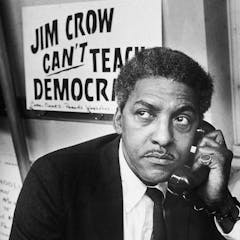
Articles on Segregation
Displaying 1 - 20 of 101 articles

Ghana has long attracted African Americans who have suffered racial injustices in the US.

The next time you hear about a Supreme Court concurrence or dissent, pay attention. You may get a window to where the law is headed in the future.

As the nation marks the 70th anniversary of Brown v. Board, one of its most significant side effects − the large-scale loss of Black teachers − continues to affect America’s schools.

Ardent segregationist Lester Maddox became governor of Georgia after earning the admiration of white voters by refusing to integrate his chicken restaurant.

Sydney emerges as the most segregated of our biggest capital cities, and the trend will continue without broad changes in government policy and investment.

Detroit is one of the country’s most segregated regions, but census data shows how that’s changing in both the city and suburbs.

Beyoncé’s country-inspired album has caused a stir because the country music scene has a history of racial segregation that has erased its Black roots and gatekept it from Black artists.

A court long known for its landmark decisions expanding civil rights is now known for highly conservative rulings reining in government power.

As the nation approaches the 70-year anniversary of Brown vs. Board of Education, an education professor lays out the state of school segregation in America.

Focusing on specialist schools for students with disability misunderstands the royal commission report’s point and misses its major implications for all schools.

Education segregation could continue for Australia’s young people for at least another generation – and possibly longer – in light of the disability royal commission recommendations.

The interplay between diversity and urban planning in Sudan has created vibrant cityscapes, but also led to segregation and division.

For the formerly enslaved Black people in Texas, Juneteenth meant more than freedom. It meant reuniting families and building schools and developing political power.

While Bryant Donham was never charged for her involvement in Till’s death, the Justice Department continued to investigate the case and consider the potential for an arrest as recently as 2021.

Parents who had positive experiences in school often select schools for their children that are similar to the ones they attended – but if they had a bad experience they avoid those kinds of schools.

Bayard Rustin led a long and complicated life dedicated to the fight for equal rights. Targeted by the FBI, Rustin became a close adviser to Martin Luther King Jr.

Voter demographics and policy priorities are two recurrent, big issues on Election Day – but shifts in election administration and voting laws are new challenges influencing the midterms.

What’s at stake when Americans lose faith in the legitimacy of the Supreme Court?

In the civil rights era, ‘Reverse Freedom Rides’ were more than just a political stunt. They were part of a systematic effort to deprive Black Americans of their livelihoods and force them out.

Different views of gentrification drive divisions that keep school activists separated by race.
